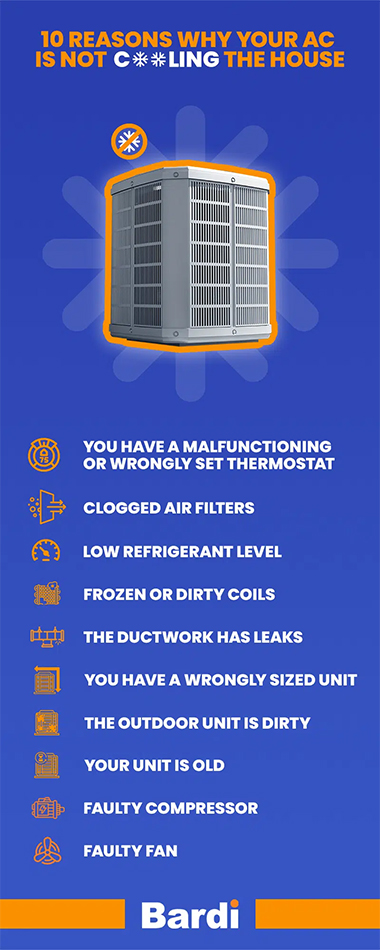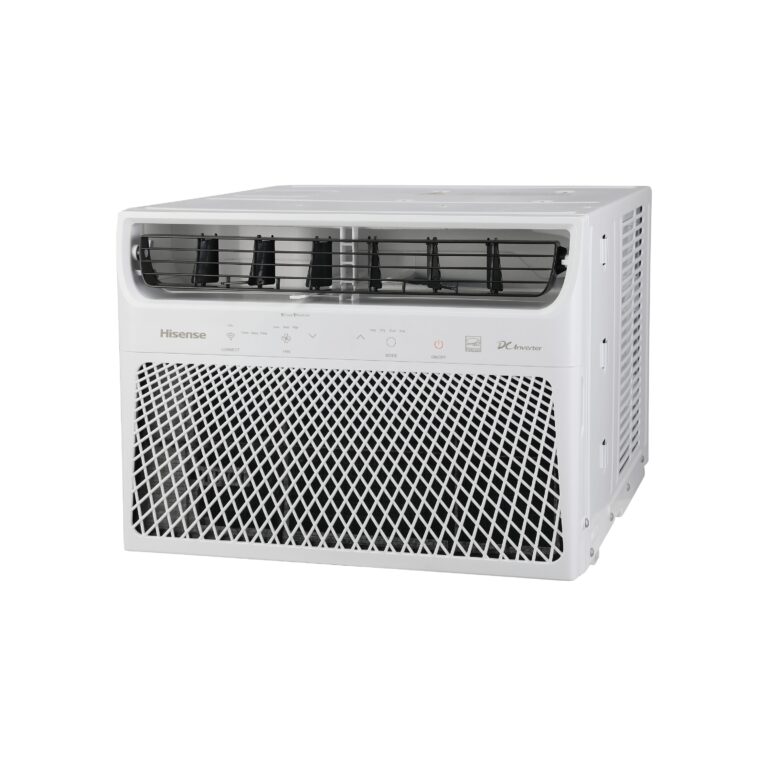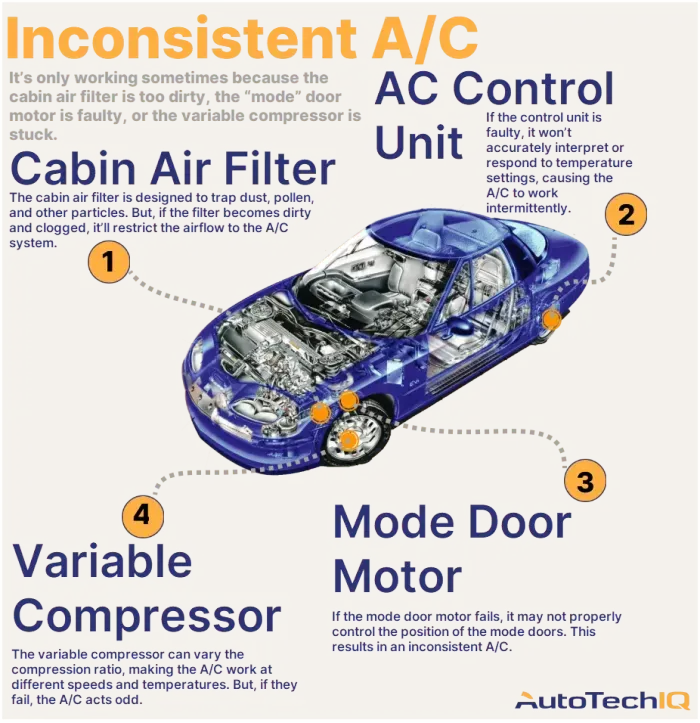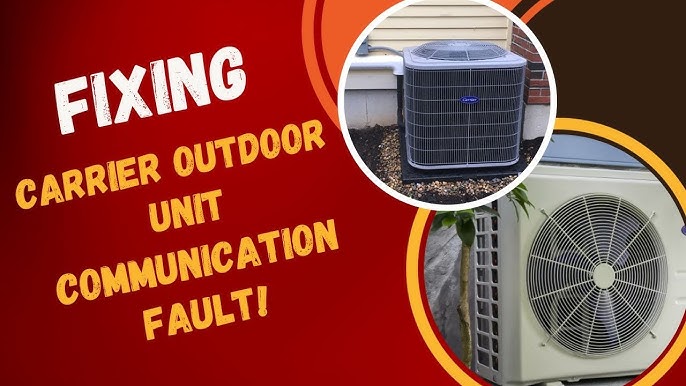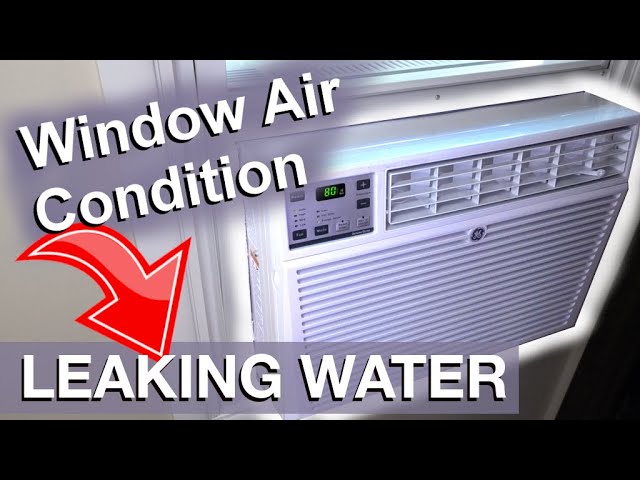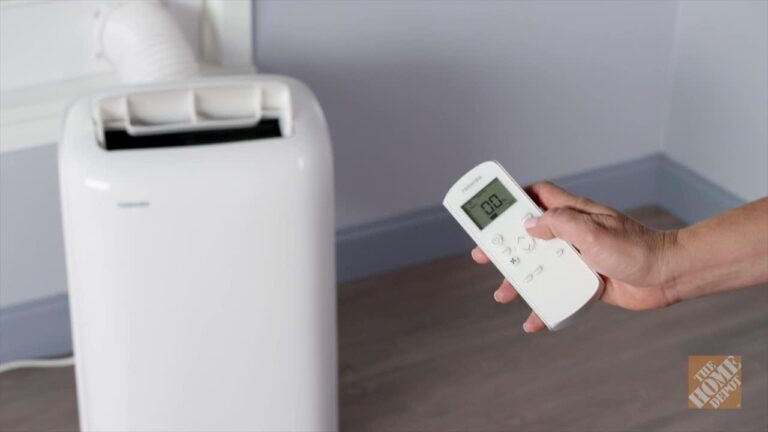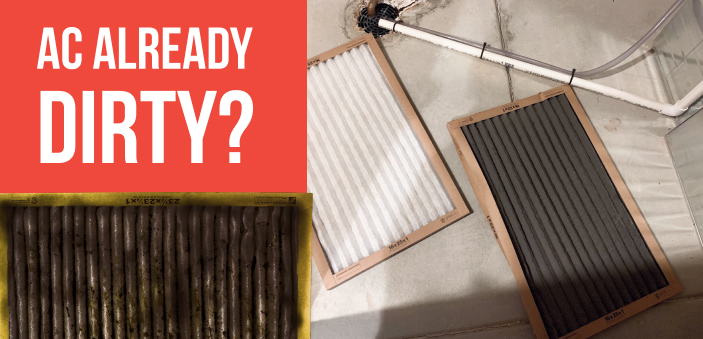Why Is My Air Conditioner Not Cooling The House? Troubleshoot Now
Your air conditioner might not be cooling due to dirty filters or low refrigerant levels. Other issues could include thermostat malfunctions or blocked vents.
An air conditioner that fails to cool your home can be frustrating. Several factors can contribute to this issue. Dirty filters can restrict airflow, making it hard for the unit to function efficiently. Low refrigerant levels can also hinder the cooling process.
Thermostat malfunctions may lead to incorrect temperature settings, causing the unit to underperform. Blocked vents can obstruct the flow of cool air, making rooms feel warmer. Regular maintenance and timely checks can help identify and rectify these problems, ensuring your air conditioner runs smoothly and efficiently.
Check Thermostat Settings
Is your air conditioner not cooling the house? The problem might lie in your thermostat settings. Checking and adjusting the thermostat can often solve cooling issues quickly.
Correct Temperature
First, ensure the thermostat is set to the correct temperature. Many people mistakenly set it higher than needed. This simple error can make your home feel warm.
Here are some tips for setting the correct temperature:
- Set the thermostat to 78°F (25.5°C) when you’re home.
- Lower it a few degrees for quicker cooling.
- Set it higher when you’re away to save energy.
Mode Settings
Next, check the mode settings on your thermostat. Make sure it is set to “Cool” mode. If it is on “Heat” or “Fan,” your home will not cool down.
Here’s how to check and adjust the mode settings:
- Locate the mode button on your thermostat.
- Press the mode button until “Cool” is displayed.
- Double-check that the fan setting is on “Auto.”
These simple steps can ensure your air conditioner runs correctly.

Credit: m.youtube.com
Inspect Air Filters
Your air conditioner’s performance can drop because of dirty air filters. Clean air filters are crucial for efficient cooling. They keep dust and dirt out of your AC unit. Regular inspection is key to ensuring your AC cools properly.
Filter Condition
First, check the condition of your air filters. Dirty filters block airflow, making your AC work harder. This can lead to poor cooling and higher energy bills. To inspect, remove the filter and hold it up to light. If you can’t see light through it, it’s time to clean or replace it.
| Filter Type | Condition |
|---|---|
| Disposable | Replace when dirty |
| Reusable | Clean regularly |
Replacement Schedule
A regular replacement schedule ensures your AC runs efficiently. Disposable filters should be replaced every 1-3 months. Reusable filters need cleaning every 1-2 months. Mark your calendar to remind yourself of these tasks.
- Check filters monthly
- Replace disposable filters every 1-3 months
- Clean reusable filters every 1-2 months
By keeping up with these simple steps, you’ll ensure your air conditioner cools your home effectively. Clean air filters mean better airflow and cooler air.
Examine Refrigerant Levels
One common reason your air conditioner is not cooling the house is low refrigerant levels. Refrigerant is the substance that absorbs heat and cools the air. If the refrigerant is low, your AC cannot cool efficiently. Let’s explore how to check and manage refrigerant levels.
Signs Of Low Refrigerant
- Warm Air: Blows warm or room temperature air.
- Long Cooling Cycles: Takes longer to cool rooms.
- Ice Formation: Ice forms on refrigerant lines.
- Hissing Sounds: Hissing or bubbling sounds.
Recharging Refrigerant
Recharging refrigerant involves adding more refrigerant to the system. This task should be done by a professional. Follow these steps to recharge refrigerant:
- Turn off the air conditioner.
- Contact a certified HVAC technician.
- The technician checks for leaks.
- Repair any leaks found.
- Refill the refrigerant to the proper level.
Regular maintenance can prevent refrigerant issues. Keep your AC running smoothly by scheduling annual checks.
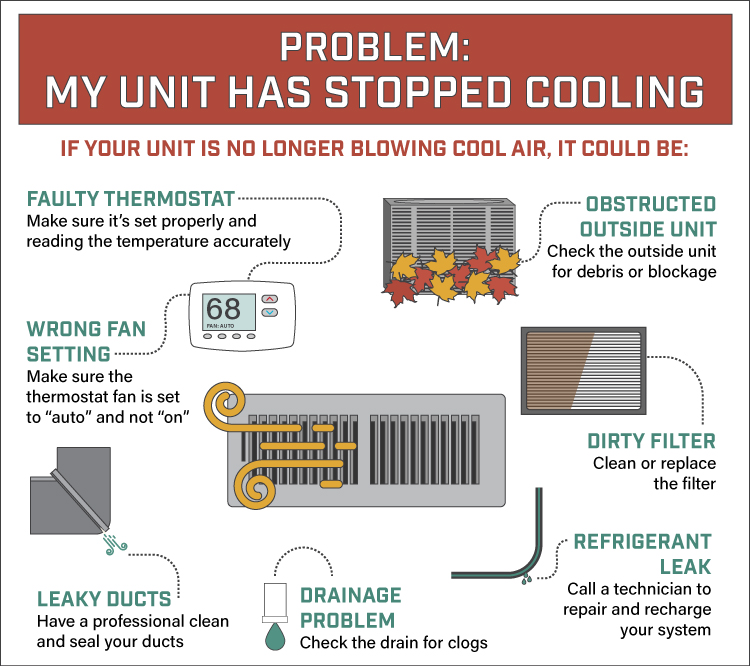
Credit: www.microcapacitacion.com.ar
Assess Airflow Obstructions
Is your air conditioner not cooling the house effectively? One common cause is airflow obstructions. Ensuring proper airflow is crucial for your AC unit’s performance. Let’s explore two major obstructions: blocked vents and dirty coils.
Blocked Vents
Blocked vents can significantly reduce your AC’s cooling capacity. Check all vents and registers throughout your home. Make sure they are open and unobstructed. Furniture, curtains, or rugs can block vents, impeding airflow.
| Common Obstructions | Solution |
|---|---|
| Furniture | Move away from vents |
| Curtains | Adjust or tie back |
| Rugs | Reposition or remove |
Dirty Coils
Dirty coils can also hinder your AC’s efficiency. The evaporator and condenser coils must be clean. Dirt and dust on coils reduce heat absorption and release, affecting cooling.
- Evaporator Coils: Check inside your indoor unit.
- Condenser Coils: Located in the outdoor unit.
Regular maintenance is key. Clean coils with a soft brush or cloth. Use a vacuum for stubborn dirt. For professional cleaning, hire an HVAC technician.
Evaluate Electrical Components
When your air conditioner isn’t cooling, it might be due to electrical issues. Checking the electrical components can help identify the problem. This section will guide you through evaluating key electrical components such as the circuit breaker and wiring.
Circuit Breaker
The circuit breaker is a safety switch that controls the power to your AC unit. If it trips, your AC won’t cool the house. Follow these steps to check the circuit breaker:
- Locate the electrical panel in your home.
- Find the breaker labeled for the air conditioner.
- Ensure it is in the “ON” position.
- If tripped, switch it to “OFF” and then back to “ON”.
Repeat this process if the breaker trips again. If it continues to trip, there may be an underlying issue that needs professional help.
Wiring Issues
Wiring issues can cause your air conditioner to malfunction. Faulty wiring might prevent the unit from getting power. To check for wiring problems, follow these guidelines:
- Turn off the power to the AC unit at the breaker.
- Inspect the wires for visible damage or wear.
- Ensure all connections are tight and secure.
- Use a voltage tester to check for power flow.
If you find damaged wires, they must be replaced. Loose connections should be tightened. For complex wiring issues, contacting a professional electrician is recommended.
By evaluating these electrical components, you can troubleshoot why your air conditioner is not cooling the house. Always prioritize safety when dealing with electrical parts.
Look For Leaks
Is your air conditioner failing to cool your home? One common issue could be leaks. Leaks can lead to serious cooling problems. Let’s explore the different types of leaks you should check for.
Refrigerant Leaks
Refrigerant leaks are a major problem. Your AC needs refrigerant to cool the air. A leak can cause the refrigerant level to drop. This makes your AC less efficient. Look for signs of a refrigerant leak:
- Ice on the refrigerant lines
- Hissing noises
- Lower cooling power
If you notice these signs, call a professional. Fixing refrigerant leaks is not a DIY job. Professionals have the right tools and skills.
Water Leaks
Water leaks can also impact your AC’s performance. Water leaks often occur due to a clogged drain pipe. Here are signs of a water leak:
- Puddles around the indoor unit
- Musty smell
- Water damage on walls or ceilings
To fix a water leak, check the drain pipe first. Make sure it is not clogged. If the problem persists, seek help from an HVAC technician.
| Type of Leak | Signs | Action |
|---|---|---|
| Refrigerant Leak | Ice, Hissing, Low Cooling | Call Professional |
| Water Leak | Puddles, Musty Smell, Water Damage | Check Drain Pipe, Call Professional |
Check Outdoor Unit
When your air conditioner isn’t cooling the house, the outdoor unit is a critical point to inspect. The outdoor unit plays a vital role in the cooling process. Ensuring it functions properly is essential.
Debris Around Unit
Debris around the outdoor unit can obstruct airflow. This reduces the unit’s efficiency. Check for leaves, dirt, and other debris around the unit.
- Clear away any leaves.
- Remove dirt and dust.
- Ensure no plants block the airflow.
Keeping the area clean will improve the unit’s performance. Use a garden hose to wash off the dirt. Ensure the unit is off before cleaning.
Fan Operation
The fan in the outdoor unit must operate correctly. Inspect the fan blades for any damage. Damaged blades reduce efficiency.
| Inspection Steps | Action Required |
|---|---|
| Check fan blades | Replace if damaged |
| Listen for unusual sounds | Call a technician |
| Ensure fan spins freely | Remove any obstructions |
Listen for any unusual sounds from the fan. Strange noises might indicate a problem. If the fan does not spin freely, inspect for obstructions.

Credit: www.moncriefair.com
Consult A Professional
When your air conditioner stops cooling, it can be frustrating. You may try to fix it yourself, but sometimes the problem is too big. This is when you should consult a professional. A trained technician can diagnose and fix the issue quickly.
When To Call
There are certain signs that indicate you need help. If your air conditioner is blowing warm air, it’s time to call. Also, call if there is water leaking around the unit. Strange noises or bad smells are also signals for help.
Another sign is if your energy bills are higher. This could mean your air conditioner is working too hard. Lastly, if the unit is cycling on and off frequently, call a professional.
What To Expect
When you call a professional, they will inspect your unit. They will check for common issues like low refrigerant levels. They will also look at the thermostat settings. The technician might clean or replace the air filter. They will check the electrical connections as well.
After the inspection, the technician will explain the problem. They will tell you what needs to be fixed. They will also give you a cost estimate. This helps you understand what is wrong and how much it will cost to fix it.
| Signs to Call | Technician Actions |
|---|---|
| Blowing warm air | Check refrigerant levels |
| Water leaks | Inspect drainage system |
| Strange noises | Examine internal components |
| High energy bills | Test system efficiency |
| Frequent cycling | Check thermostat and wiring |
Remember, regular maintenance can prevent many of these issues. Schedule a professional check-up at least once a year.
Frequently Asked Questions
Why Is My Air Conditioner Running But Not Cooling The House?
Your air conditioner may not cool due to dirty filters, low refrigerant levels, or faulty components. Check for obstructions, clean filters, and consider professional maintenance.
Why Is My Ac Not Cooling To The Set Temperature?
Your AC may not cool due to dirty filters, low refrigerant, or a malfunctioning thermostat. Check for blocked vents.
How Do I Reset My Central Ac Not Blowing Cold Air?
Turn off the thermostat. Check and reset the breaker. Clean or replace the air filter. Restart the system.
Conclusion
Understanding why your air conditioner isn’t cooling is crucial. Regular maintenance can prevent many issues. Check filters, thermostat settings, and refrigerant levels. Addressing these factors ensures efficient cooling. Stay proactive to enjoy a comfortable home environment. For persistent problems, consult a professional technician.
Keeping your AC in top shape enhances comfort and energy efficiency.

